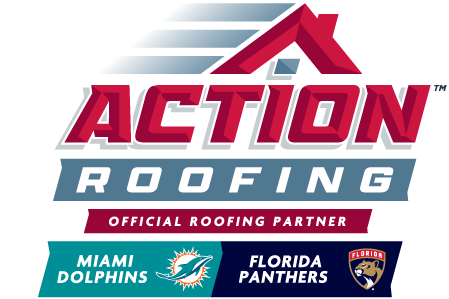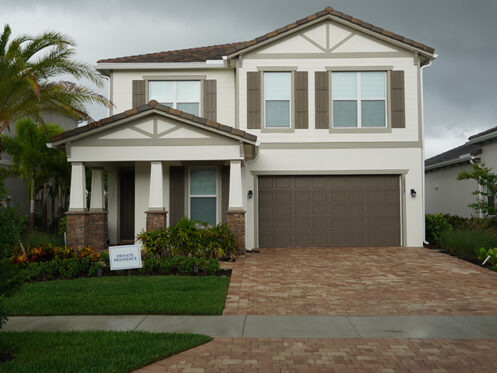Florida summers don’t hold back. The heat climbs fast, and if your roof can’t handle it, your whole house will soon feel like an oven. The kind of roof you choose can really affect how cool your home feels and how much you end up paying to run the AC.
Use Roof Color to Your Advantage
Many people don’t think about color when they picture a roofing upgrade, but it plays a bigger role than you might expect. The surface of your roof takes a direct hit from the sun for hours, and if it absorbs too much heat, it radiates down into your attic and keeps your whole house warmer than it should be. You probably run your air conditioning longer just to get comfortable again.
Now, think about what happens when you wear a black shirt out in the sun. It gets hot fast. Roofs work the same way. Lighter colors like white, light gray, beige, or even soft clay shades reflect more sunlight instead of soaking it in. That bounce-back effect means less heat ends up inside your attic.
You don’t have to go with a white roof to get the benefit, either. Many manufacturers offer shingles and tiles with reflective pigments baked right in, so even if you prefer a medium tone, like weathered wood or light brown, you can still reduce heat absorption. If your current roof is dark asphalt or faded black, this kind of color switch can lead to a noticeable drop in your attic temperatures.
Choose Metal Roofing For Long-Term Cooling
If you’re getting a new roof and want your home to stay more comfortable, metal’s worth checking out. It’s tough enough to withstand storms and also does a solid job of keeping heat out. The smooth surface of metal reflects sunlight better than many other materials, and the shape of the panels allows hot air to move off the surface quickly.
Metal roofing works differently from shingle roofing. Shingles lie flat and tend to trap more heat between the layers. Metal panels have air gaps underneath and interlocking seams that can help block the sun’s radiant energy before it enters your attic. You can also add cool roof coatings to metal, which bumps the reflectivity even more. Some of these coatings are clear while others are color-matched to the roof panels.
Another advantage is that metal cools down quickly in the evening. Unlike tile or asphalt, which can stay warm long after the sun goes down, the metal loses heat quickly. That helps your attic cool off sooner at night, which means your home doesn’t retain as much heat by bedtime.
You’ll want to work with someone who knows how to install metal properly, especially in a hot and humid climate like Florida’s. A poorly vented or incorrectly anchored metal roof can create problems, especially in high winds. But when installed correctly, it’ll give you decades of sun protection while helping you cut down on cooling costs.
Ventilation Matters
Attic ventilation is easily overlooked, but it plays a huge role in keeping your living space cooler. Your attic acts like a buffer zone between your roof and the rooms below. If hot air builds up in that space and has nowhere to go, the heat just radiates down into your home and stays there. That makes your AC work harder and keeps your rooms warmer even after the sun goes down.
A well-ventilated attic works like a release valve. The idea is to move the hot air out and let fresh air in without letting rain or pests sneak through. Most homes use a combination of ridge vents, soffit vents, and sometimes attic fans to keep that airflow moving. Ridge vents run along the top of the roof and let rising hot air escape. Soffit vents, located under the eaves, pull in cooler air from outside to keep that cycle going.
If you’re re-roofing or thinking about upgrades, this is a good time to have your ventilation system checked. Sometimes, even newer homes have blocked or poorly placed vents that trap heat. It doesn’t take much: Insulation pushed up against a vent or a soffit grill clogged with dirt can disrupt the airflow and reduce the cooling effect. You can also look into solar-powered attic fans. These pull hot air out during the day without using your home’s electricity.
Go With Tile Roofing if You Value Thermal Mass
While tile roofs are heavier and more expensive than asphalt, they bring a unique cooling advantage to the table. Clay and concrete tiles don’t reflect as much sunlight as metal, but they do something different: They absorb and store heat and then release it slowly. That slow release means your home sees less sudden heat gain during the hottest parts of the day.
Thermal mass works best with good attic insulation and ventilation since the roof holds heat without sending too much of it down into your home. Tile roofs also allow air to move between the tiles and the roof deck, which helps release built-up heat.
Florida’s sun, rain, and humidity don’t usually cause problems for tile roofs, and they tend to last a long time if installed properly. You’ll see a lot of tile roofs in hotter parts of the world for exactly this reason. They might not look high-tech, but they’re surprisingly effective at keeping homes cooler.
Upgrade Your Underlayment to a Radiant Barrier
The part of your roof you don’t see — the underlayment — makes more of a difference than people realize. Traditional felt underlayment doesn’t do much to reflect heat, but radiant barrier underlayment does. These are made with reflective foil or coatings that bounce radiant heat back out toward the roof instead of letting it into the attic.
Radiant barriers don’t take up space or need complicated installation. They go right under your roof covering, between the deck and the shingles, tiles, or panels. You can also add radiant foil insulation to the underside of your roof deck if you’re not ready for a full re-roof but want some relief from attic heat.
These barriers work best when combined with good ventilation. If hot air can’t leave the attic, then the reflective surface won’t be as effective. But if the air has somewhere to go, the barrier keeps radiant heat from even entering the space in the first place.
In Florida’s long cooling season, that extra layer of heat reflection can noticeably lower attic temperatures and reduce your cooling costs. It doesn’t make your roof look any different, so it’s a low-profile way to upgrade without changing your home’s appearance.
Consider Cool Roof Shingles for a Simple Upgrade
If you like the look of a traditional shingle roof but want something smarter for heat, check out cool roof shingles. These look like regular asphalt shingles, but they’re designed to reflect more sunlight. Manufacturers use special granules that deflect solar energy, and you can usually get them in lighter colors that complement Florida homes.
Unlike older dark shingles, which trap a lot of radiant energy, these cool shingles reflect a higher percentage of the sun’s rays. The result is less attic heat and a slower rise in indoor temperatures throughout the day. You won’t get the full effect of a metal or tile roof, but the upgrade still helps if your current roof has seen better days.
Make Your Home Roofing Choice Today
Interested in knowing more about how different roofing materials can affect your home’s comfort? At Action Roofing in Fort Lauderdale, FL, we provide roof replacement, roof inspection, storm damage, and commercial roofing services. Start your roofing project with Action Roofing and discover how much cooler your home can feel.




